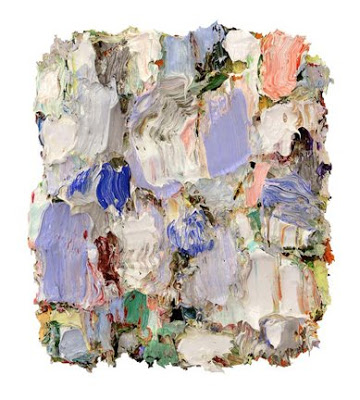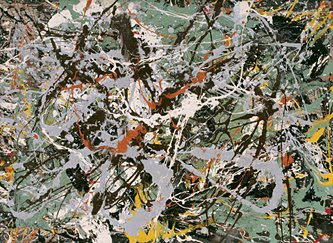
It was apparent that Michael Toenges felt deeply connected to the work that hung on the walls. Canvases heavy with paint were suspended from the white walls, almost three-dimensional with their thick, vibrant layers. When asked about his artistic process, Toenges’ eyes filled with excitement. He explained that his method was analogous to climbing a staircase with the help of a hand rail – but the painting would not reach completion until he was able to let go of the railing. Only at that point could he create the type of wildly gestural paint strokes that graced the walls of the Howard Yezerski Gallery.
I couldn’t help but make a connection to Jackson Pollock. Toenges’ paint strokes extend beyond the edge of the canvas, covering the entire space with no particular foreground or background visible. Harold Rosenberg’s term “action painting” comes to mind while trying to interpret the meaning of his strokes – seemingly more of an event than an image. His choice of color covers the spectrum, with no apparent pattern. However, in stark contrast to Pollock, Toenges’ strokes are thick, slow and methodical. Interesting, though, how decades later so many connections can be made….


Comments are closed.